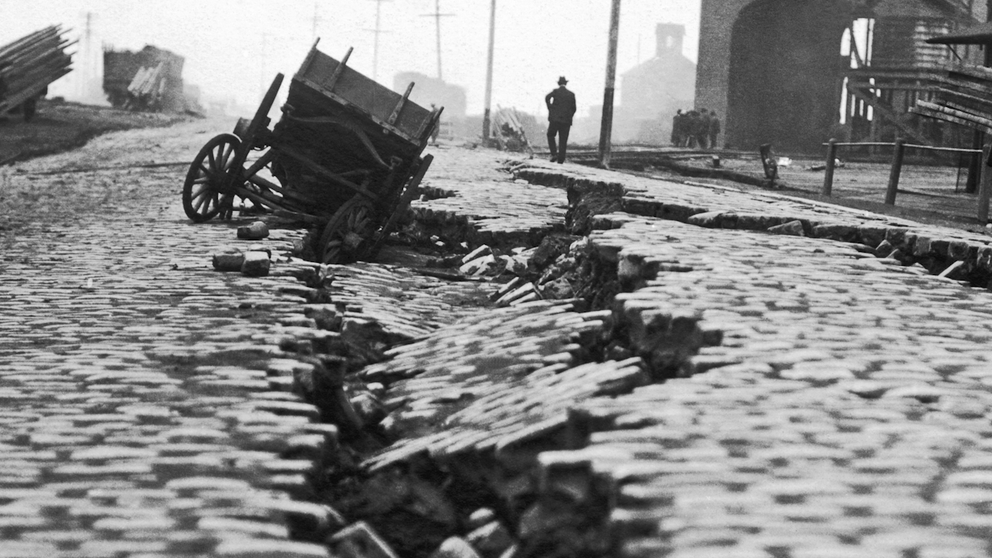How San Francisco was devastated by the 1906 earthquake
On April 18, 1906, a 7.9 earthquake and the fires that followed leveled San Francisco. But from the rubble came advancements in earthquake science and preparedness
San Francisco 1906: The earthquake that shook up seismology
On April 18, 1906, San Francisco experienced a magnitude 7.9 earthquake. The quake and the fires it caused destroyed a large portion of the city by the bay.
SAN FRANCISCO - Imagine waking up to the world shaking all around you. Bookshelves come crashing down, tables and chairs are violently jolted from the floor; walls begin to crumble — and then your home becomes engulfed by fire.
This is what the people of San Francisco woke up to just after 5 a.m. 117 years ago on April 18, 1906 when a massive earthquake estimated at a magnitude 7.7 to 7.9 struck the region.
While earthquakes are nothing new for many Californians today, the 1906 earthquake in San Francisco caught many off-guard and leveled entire city blocks.
But what came from that destruction were advancements in science and emergency preparedness, all in hopes of never repeating the devastation experienced over a century ago.
Of exponential proportions

A man walks through the ruins of San Francisco's Chinatown after the 1906 earthquake.
(Universal History Archive / Universal Images Group / Getty Images)
"The 1906 earthquake was so important because it completely changed how we saw the science of earthquakes," said Richard Allen, a seismologist at the UC Berkeley Seismology Lab.
According to Allen, the earthquake occurred along the San Andreas fault line near San Francisco with the epicenter located just offshore from the city.
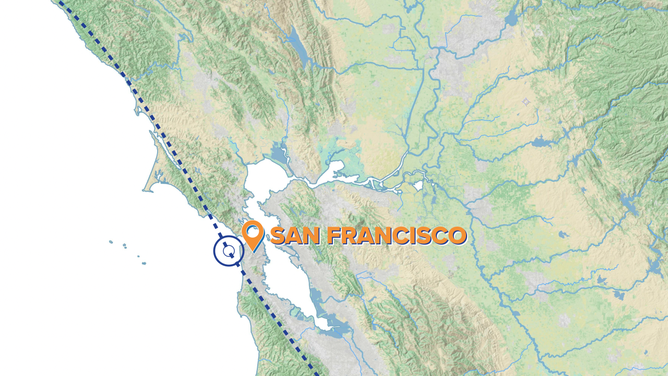
The San Andreas fault line next to San Francisco.
(Derek Thomas / FOX Weather)
The earthquake was also determined to be one of the most powerful. While Californians today are accustomed to regularly feeling the light shakes of earthquakes at a magnitude 3 or 4, the earthquake that struck San Francisco in 1906 was exponentially greater.
"The magnitude scale is a logarithmic scale," he said. "That means that when you go from a magnitude four to a magnitude five, it's 10 times bigger. [The 1906 earthquake] is estimated to be about a magnitude 8 earthquake — a really large earthquake, one of the biggest earthquakes we expect to have here in California."
In fact, the shaking was so strong that it was felt from as far south as Los Angeles and as far north as Coos Bay, Oregon — cities lying about 400 miles away from San Francisco.
According to the UC Berkeley Seismology Lab, the earthquake killed over 3,000 people, injured about 225,000 and caused property damage totaling $400 million in 1906.
San Francisco ablaze after earthquake
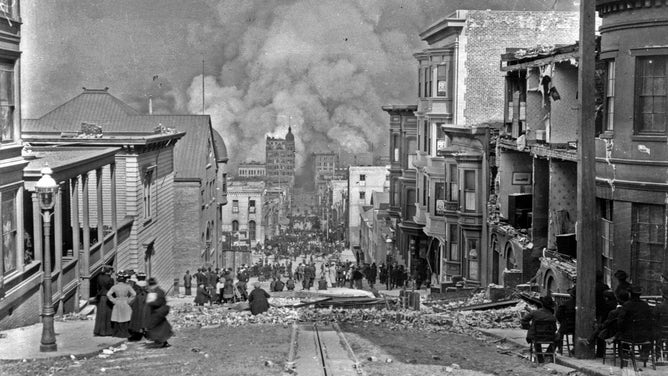
After the earthquake, large clouds of smoke billow in the background as San Franciscans watch the fires approach.
(Arnold Genthe / Universal History Archive / Universal Images Group / Getty Images)
Despite the devastation caused by the earthquake, most of the damage to the city was caused by another factor: fire.
According to Allen, shaking from the earthquake knocked over wood-burning stoves, the main source of heat for homes at the time. This caused fire from the stoves to ignite many buildings.
"Because most of the construction was all wood frame, the city burned," he said. "And as soon as you have several of these fires, of course, it's no longer possible to contain them, and the fire just grows and grows and grows until it's burnt a very large fraction of the city."
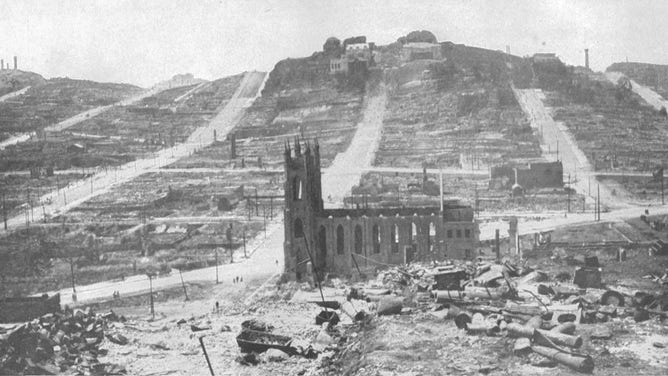
View looking west from Telegraph Hill in San Francisco after the 1906 earthquake.
(U.S. Geological Survey)
"If you see images from after the San Francisco earthquake and fire, you see just dead flat landscape with all of the roads in a crisscross pattern because all of those wood frame buildings have been completely burnt to the ground."
Learnings from the rubble
Many lessons were learned after the 1906 earthquake.
"There was a shift to more robust buildings that were both more fireproof and also were more resilient to shaking," Allen said.
At the time, people noticed that the few buildings in the city that had steel frames remained standing. So, during the reconstruction, new buildings were made with steel frames rather than the traditional wood frames.

A small group of San Franciscans stand in front of what remained of City Hall. While much of the building crumbled away, its steel frame stood firm.
(HUM Images/Universal Images Group / Getty Images)
The earthquake was also critical in furthering seismology and understanding the earthquake process.
"Before the 1906 earthquake, believe it or not, we didn't understand that earthquakes occurred on fault lines," Allen said.
Another lesson learned was how earthquakes happen. According to Allen, scientists learned that earthquakes are caused by tectonic plates slipping past each other along those fault lines, causing a rupture along the fault.
"This is called elastic rebound theory, and it's still at the heart of our understanding of faulting processes," he said.
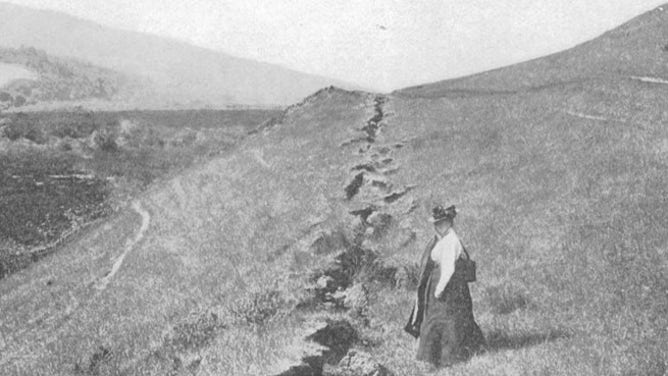
A woman stands next to a fault trace near Point Reyes Station, which is located northwest of downtown San Francisco.
(U.S. Geological Survey)
Advancements in earthquake preparedness were also made — particularly, an early warning system. According to Allen, after the 1906 earthquake, a doctor named J.D. Cooper proposed implementing such a system. He suggested that, if shaking were detected outside a city, then a signal could be transmitted to a city by using telegraph cables.
"You would have a characteristic bell, as he called it, in the center of the city that would ring. Everybody would know that there was an earthquake coming," Allen said.
"It's only now over 100 years later, we have an earthquake early warning system for California, Oregon and Washington called ShakeAlert. And so, that has its roots all the way back in the 1906 earthquake, which is pretty neat."
California shaken, but not stirred
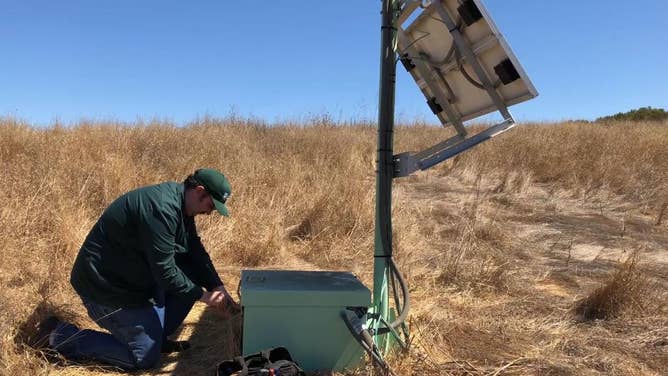
A USGS electronics technician performs maintenance on a ShakeAlert Earthquake Early Warning (EEW) sensor station, located in the San Francisco Bay Area.
(Paul Laustsen / U.S. Geological Survey)
Over a century has passed since the 1906 earthquake brought San Francisco to the ground. However, concern about earthquakes is still top of mind for many.
"In the Bay Area, the likelihood of a major damaging earthquake in the next 30 years, it's basically a two in three likelihood," Allen said. "So, it's more likely than not that we will have a large, damaging earthquake greater than a magnitude 6.7 earthquake in the Bay Area in the next 30 years."
Earthquakes are an inevitability in San Francisco and many other parts of California.
"We see these events happening. We know what the impact is going to be," Allen said. "So, we just have to build our lives in a way that it's more robust, more resilient to these kinds of events."
